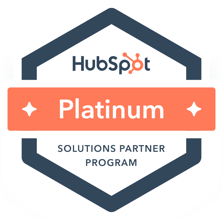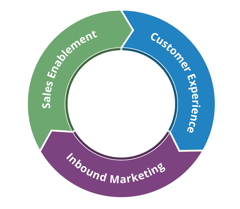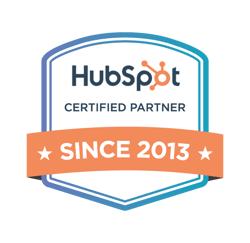 “Employees are a company’s best resource.” This is an expression many of us have likely heard before, and that most of us can attest to based on our own experience running or managing a business.
“Employees are a company’s best resource.” This is an expression many of us have likely heard before, and that most of us can attest to based on our own experience running or managing a business.
However, we tend to think of employees as operating behind the scenes. They’re the ones making sure the systems and process in place to meet customer demands are running smoothly. And while this is true, this narrow focus causes us to miss out on an exciting opportunity to leverage employee loyalty into better brand reach and awareness.
This is a concept known as employee advocacy, and if implemented correctly, it can be a very powerful tool in helping you carry out your overall marketing strategy. And to demonstrate this, we’re going to talk a bit about what employee advocacy is, as well as how you can design an initiative that will be truly effective.
What is Employee Advocacy?
Before going too far, it’s important to define just what we mean by employee advocacy. Essentially, this is an initiative that turns employees into brand ambassadors. Another way to think of it is internal influencer marketing. The idea is that your employees have some following, or an inner circle, and they can influence the thoughts, perceptions and actions of those in that circle.
Furthermore, because employees are under no obligation to promote the company, their endorsements can be seen as more authentic, something that’s key to any branding or marketing campaign.
An employee advocacy program also makes use of employee access to these groups of people in support of a marketing goal. However, for an employee advocacy program to work, you need to first have the following:
- High employee loyalty. It will be hard for your advocacy program to work if you have high turnover rates. Any attempt by employees to promote your brand will be seen as inauthentic, meaning they will be largely ineffective.
- High engagement. Engaged employees are more willing to go above and beyond what’s expected of them. And that’s exactly what an employee advocacy program is asking. As a result, it’s important to have a high buy in from people before trying to roll out an employee-based marketing plan.
How to Effectively Incorporate Employee Advocacy into Your Marketing Strategy
Now that you have a better idea of what employee advocacy is, here are some ways to successful incorporate it into your overall marketing strategy.
- Be Clear About What Employee Advocacy Can Do For You
The first thing to do is to determine what it is you hope to get out of your employee advocacy program. And to do this, you need to have a good idea of the people you’ll be able to access through your employees. For example, are the people in your employees’ inner circle part of your target market? Or are they part of a group you’re hoping to reach? The reason this is so important is that it allows you to manage expectations. If you have information that most of those connected to your employees have never heard of you, then it’s probably not smart to expect an employee advocacy campaign to generate a lot of new sales. But perhaps more importantly, knowing who you’re going after and what you can accomplish with employee advocacy will help you create content that is actually going to resonate with people, helping make it more effective in making your overall marketing strategy a success. - Be Consistent with Content
Once you’ve identified who you’re going after, it’s really important for you to deliver the right content. And to do this, the best thing you can do is to create content for your employees to distribute. Of course, this might cause you to miss out on the power of user-generated content. But in this case, this is probably for the best. It’s better that the content exposed to your employees’ inner circles be created to communicate a specific message so that you can ensure maximum effectiveness. If you really don’t want to create content for people, then consider setting up some detailed content guidelines with examples. This will allow you to get the best of both worlds—employees get the freedom to create their own content, but you get to control the message. - Make it Easy for Employees to Participate
Employee advocacy programs will be more successful the more people you get involved. And one of the ways to make it easier for people to participate is to give them everything they need.
One of the best ways to do this is to set up a centralized platform for employees to learn about the program and how to anticipate. For examples of this, consider what HP, IBM and AT&T did for their employees. They created internal platforms where employees could learn about the different promotions going on, and they even included some examples of content people could use, all in the name of trying to make it easier for people to participate in the program. Another thing you’ll want to do is offer incentives. Giving people an extra reason to participate is going to boost engagement, which will help make your initiative more successful. But try to keep incentives reasonable. Offering too much could cause people to participate for the reward and nothing else, which erodes the authenticity of your content and overall campaign.
Employee advocacy programs are great for helping you achieve your overall marketing objectives. But you need to have the right approach if these programs are going to produce the desired set of results. Use the tactics discussed above and put your employee advocacy program on track for success.
If you're interested in discussing your current marketing strategy and how you can further align that with your brand and voice, we invite you to schedule an inbound marketing consultation with our team. You can also check out our marketing explainer videos if you have any questions specifically on content marketing.
Guest Blog Contributor: Kevin Conner is the founder of a number of successful businesses. His latest venture, Broadband Search, is designed to help people find the best value internet service provider in their area. When he’s not working on his businesses, he enjoys contributing to business blogs and forums.


.png?width=80&height=80&name=diamond-badge-color%20(1).png)
__Square.png?width=250&height=250&name=Marketing_Hub_(1)__Square.png)




.png?width=250&name=diamond-badge-color%20(1).png)
